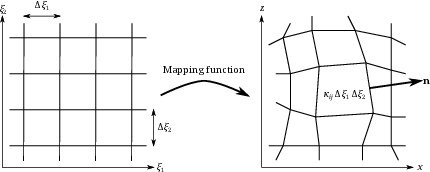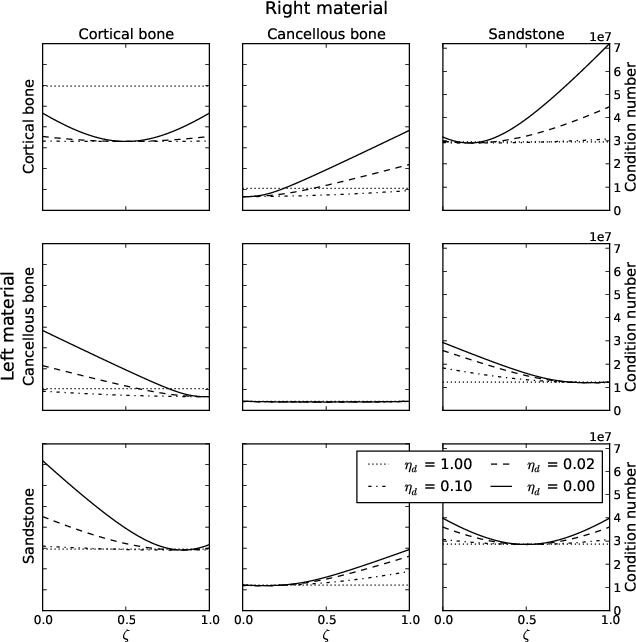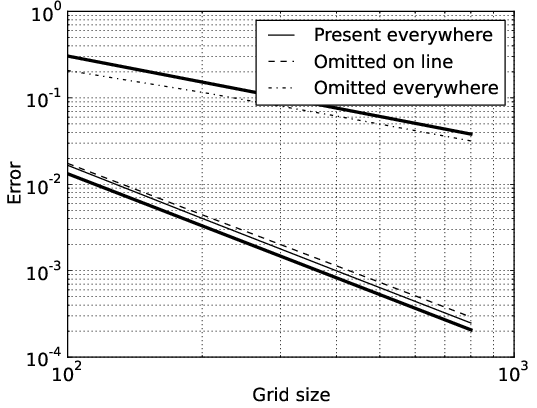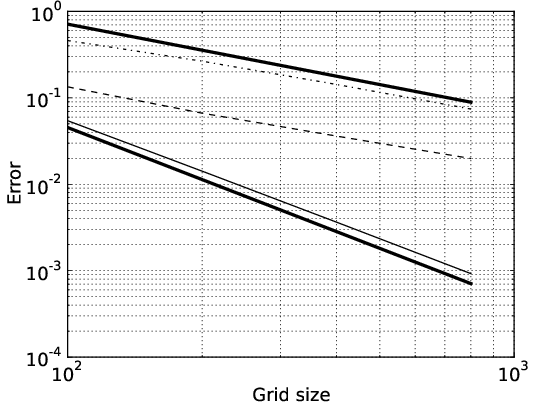- The paper develops a high-resolution finite volume method to simulate wave propagation in poroelastic and fluid media using mapped grids.
- It implements modified flux approaches to accurately handle complex interface conditions and anisotropic behaviors at material boundaries.
- Numerical results demonstrate consistent second-order convergence and practical accuracy in simulating plane waves and resonance-like behaviors.
Finite Volume Modeling of Poroelastic-Fluid Wave Propagation with Mapped Grids
Introduction
The paper introduces a high-resolution finite volume method designed to model wave propagation in systems containing multiple poroelastic media and/or fluids. This method is implemented using mapped grids to accommodate curved interfaces between distinct materials. This section focuses on the underlying framework and highlights the importance of poroelastic theory, introduced by Maurice A. Biot, which extends the mechanics of fluid-saturated porous media through homogenization techniques. Applications extend to in vivo bone modeling and underwater acoustics.
Governing Equations and Interface Conditions
Poroelastic media require a first-order linear system of PDEs, where anisotropic properties translate to orthotropic behavior—a setup where deformation across different material axes is independent. The paper discusses handling media composed of fluid and poroelastic materials, utilizing Biot’s equality of energy partition within propagating waves. Interface conditions play a crucial role, handled via Deresiewicz and Skalak's imperfect hydraulic contact condition. Between poroelastic media, interface conditions are related to pressure differentials and fluid flow continuity.
Mapped Grid Finite Volume Methods
Mapped grids offer advantages over unstructured grids due to reduced computational overhead and simpler data structures. However, implementing finite volume methods for anisotropic media creates challenges when dealing with arbitrary grid orientations. The paper discusses modifications required for the classical high-resolution finite volume method, particularly at interfaces where poroelastic material meets a fluid. Traditional methods may inaccurately transmit poroelastic stress and velocities into fluid regions, necessitating a revised flux approach.

Figure 1: Example of a mapped grid, showing computational space at the left and physical space at the right.
Riemann Problem Solutions
The solution of Riemann problems is vital for high-resolution finite volume methods. The paper simplifies the eigenproblem from an 8x8 unsymmetric matrix to a 4x4 symmetric-definite form by utilizing properties of poroelastic and acoustic systems. Further reduction employs factorization and orthonormalization techniques to effectively find eigenvectors corresponding to wave families in different media.
Numerical Results
Simulation results demonstrate the efficacy of the method in handling rectilinear grids and interfaces. Noteworthy is the omission of the second-order correction term, which traditionally improves accuracy but presents challenges at material interfaces. The paper reports consistent second-order convergence for various test cases, highlighting the solution’s applicability in modeling plane waves reflected and transmitted at interfaces.

Figure 2: Variation of the condition number of the Riemann solution linear system.
Mapped Grid Scenarios
Attention is given to cylindrical scatterer scenarios with complex grid mappings crucial for modeling resonance-like behavior at specific frequencies. Despite reduced convergence rates due to grid distortions, the paper underscores the practical accuracy achieved across fine grid simulations. Suggestions for future work involve adaptive mesh refinement and potential transitions to three-dimensional modeling.


Figure 3: Comparison of classical and fluctuation-based approaches to cell updates from transverse Riemann solves.
Conclusion
The paper effectively extends previous work on finite volume modeling to incorporate mapped grids, addressing challenges such as non-rectilinear interfaces and varied hydraulic conditions. It posits future enhancements in second-order corrections and three-dimensional modeling capabilities, alongside potential improvements in the accuracy of stiff regime solutions through advanced eigenvector solutions or exponential time-integrators.


Figure 4: Detailed examination of the effect of omitting the second-order correction term for the case with lowest convergence rate.







